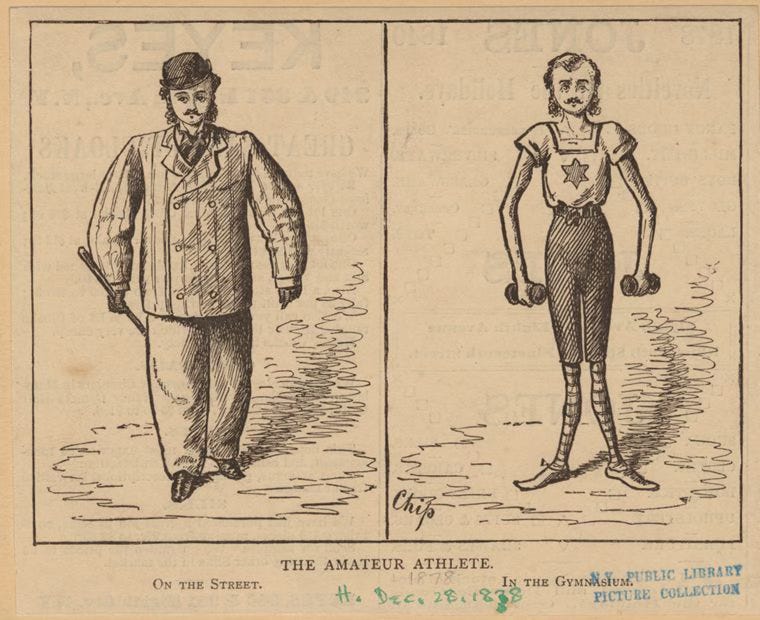Good morning,
I came across a very inspiring Joan Didion quote this week that I found worth sharing: “You have to pick the places you don’t walk away from.” I’m not sure where it’s from, but I’m here.
Today’s newsletter is about recovery—a theme I’ve been thinking about in relation to last week’s essay on athletics as a life practice.
You’ve probably noticed it too: everyone’s recovering. From something. From burnout, from content fatigue, from a weekend in Berlin. The “recovery arc” has made its way from from physical therapy clinics to TikTok, where there’s now a whole content genre devoted to foam rolling, gut-healing supplements, red light panels, and quitting coffee. The trend cycle has entered its recovery era.
Until recently, the only people who got to “recover” were athletes, addicts, and post-op patients. Everyone else was just tired. Or lazy. Or falling behind. But recovery has now entered the culture as a lifestyle. There’s a whole retail economy built around it—the wellness industry at large, but also more specifically discourse around recovery in athletic performance.
Everyone’s talking about ice-baths, sauna after workout sessions, compressions, creatine, electrolytes. There’s a massage gun in everyone’s gym bag or glove compartment. In a 2024 New York Magazine piece, Jeremy Rellosa wrote:
A decade ago, you would only really see compression boots being used by professional athletes like LeBron James or Chloe Kim—or you might find them at sports-medicine or medical facilities. But in recent years, these boots, which are meant to improve circulation and reduce muscle soreness, have become a trendy recovery tool for at-home use, even though some pairs run upward of $600.
As most trends’ final stage in the cultural cycle, recovery can also be done from home.
Though, I’m not above any of this. I use most of the things I’ve mentioned here—except for ice baths, because I don’t like to be cold. And I do think many of these tools are genuinely helpful, even essential. What I’ve started to question, though, is the overall mindset around recovery, which feels overly “additive.” We buy more, stack more, layer more on our bodies. But recovery, at its core, is arguably subtractive. That doesn’t mean it’s passive—it just doesn’t always look like action. The difference may be similar to that of between reproductive and productive acts.
If we think about what recovery essentially is, at the end of the day, it is a “response”: A physiological process triggered by what has already taken place, usually something strenuous enough that the body needs to repair. In physical terms, it’s about muscle repair, glycogen replenishment, nervous system recalibration, hormonal balance. It includes sleep, food, hydration, rest. But it’s also something you actively do: mobility work, walking, taking a deload week. It’s an intervention, not an absence.
This week, my physiotherapist asked me to plan my “down” weeks for the entire summer, and the season ahead. Weeks where I do absolutely nothing. Not play volleyball, not go to the gym, not even watch my nutrition. It’s like knowing from the beginning week 21 is recovery week and week 36-38 will be reserved for doing nothing.
We mapped it out and for anyone who might find it useful, I’d like to share here too:
Two full weeks of nothing after the season ends—no gym, no training, no macro tracking.
Then 4–6 weeks of preseason strength training, with no volleyball (I tried negotiating for beach volleyball. I was not successful.)
During the season: every five weeks, one week of “deloading”—cutting training volume by 50%.

Athletes follow periodization schedules. They alternate between intensity and rest. Meanwhile, I’ve treated work, life, and sport like a single, uninterrupted sprint—resting only when I hit a wall. But that’s the case for almost all of us. Culturally, we’re often taught to only pause when we’ve broken down.
Planning rest in advance is radical in that context. It asks you to treat rest not as recovery from failure, but as part of the process. It’s not just about feeling better—it’s about long-term sustainability. You don’t wait to feel burned out. You rest because it’s scheduled.
In athletics, recovery isn’t downtime. It’s still training. Without it, the body doesn’t adapt; it just breaks down. In fact, real progress happens during recovery—not during the work. It is a deliberate and essential phase of any performance cycle.
Recovery also invites a nonlinear way of thinking about our bodies and physical activity. It’s not about returning to some original, pre-stressed state. It’s a transformation. You don’t come back the same. You come back changed—sometimes stronger, sometimes just different. But always with more information. That’s what recovery makes space for: integration, recalibration, and self-knowledge.
Please leave a comment or like this post if you’ve enjoyed the essay—it helps my work reach wider crowds :)
Have a nice Sunday,
Melis





